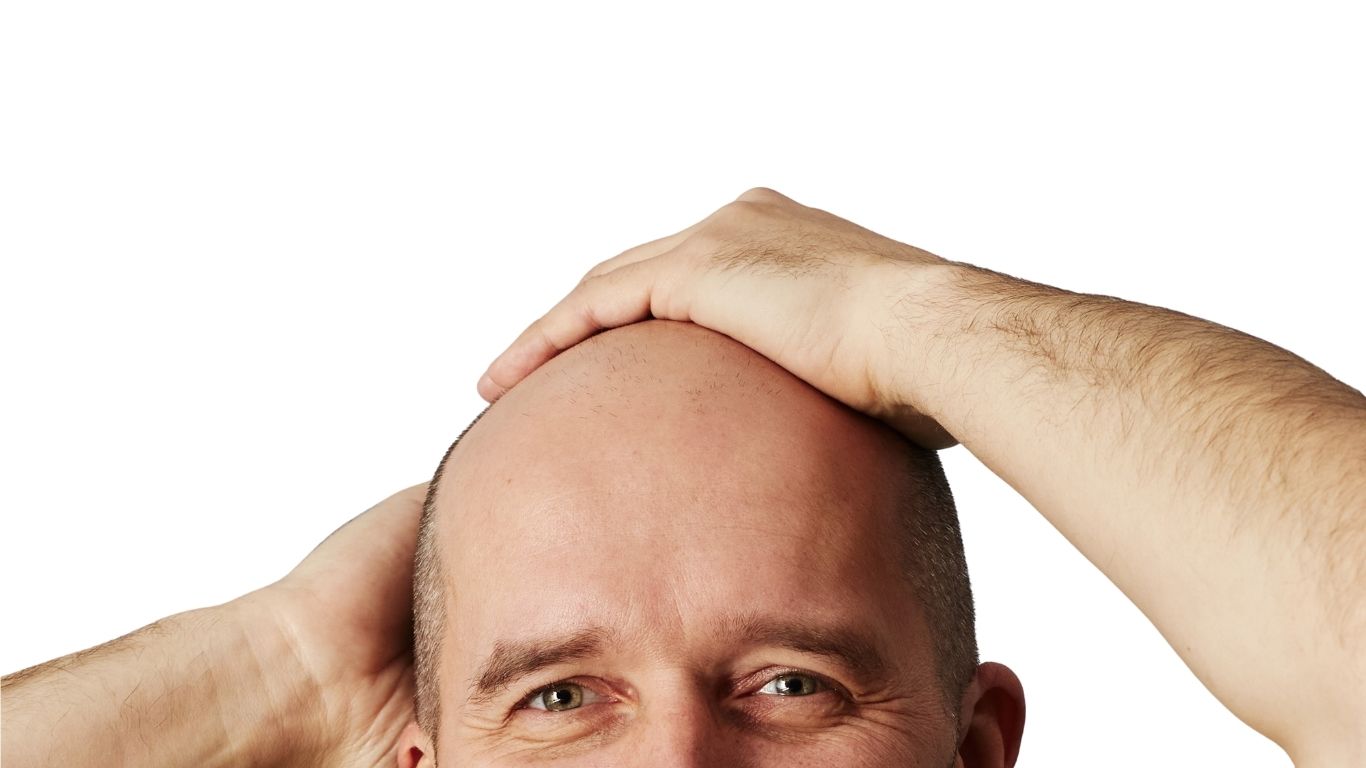A bald head may seem easy to maintain — no hair, no hassle, right? Not quite. Many people with a shaved or naturally bald head experience an oily, shiny scalp. This can lead to discomfort, insecurity, and even skin problems like pimples or inflammation.
In this blog, we’ll dive into:
-
Why your scalp gets oily, even without hair
-
How to recognize an oily scalp
-
Care routines and products that actually work
-
Common mistakes to avoid
Why Does a Bald Scalp Become Oily?
Even without hair, your scalp is still living skin — with pores, sebaceous (oil) glands, and sweat glands. These glands remain active even when you’re bald. In fact, going bald often increases oil production due to the hormone DHT, which also contributes to male pattern baldness.
These glands produce sebum (skin oil), which normally protects and moisturizes both skin and hair.
But without hair to absorb or distribute this oil, the sebum stays on the surface and creates shine or a greasy feeling.
Factors that can worsen an oily scalp:
-
Overactive sebaceous glands (a natural effect of DHT, the same hormone that causes male baldness)
-
Warm temperatures and sweating
-
Washing too frequently or too little
-
Wrong care products
-
Synthetic hats or caps that don’t breathe
How to Recognize an Oily Scalp
An oily scalp is usually easy to recognize:
-
A shiny or greasy appearance, especially on the forehead and crown
-
A sticky feeling to the touch
-
Blackheads, pimples, or red spots, particularly on the crown or temples
-
Itching or a tight, congested sensation
-
Greasy stains on pillows or hats
Daily Care Tips for an Oily Bald Scalp
1. Cleanse Your Scalp Daily (But Gently!)
Use a scalp cleanser or a shampoo specifically made for bald heads, free from sulfates and alcohol. Avoid harsh soaps — they strip your skin and actually trigger more oil production in response.
👉 Tip: Wash your head 1–2 times a day with lukewarm water. Not too hot.
Try our Bald& Headwash, specially developed with a powerhouse of ingredients to gently cleanse your scalp.
2. Exfoliate 1–2 Times per Week
Dead skin cells and excess oil clog your pores, leading to breakouts. Use a gentle scrub or a chemical exfoliant with salicylic acid (BHA) to keep pores clean.
👉 Tip: Avoid coarse scrubs with large grains — these can damage the sensitive scalp.
3. Hydrate with a Lightweight, Matte Cream
Many believe that oily skin doesn’t need moisture. Wrong! Dry skin often triggers even more sebum production. Use a light, oil-free moisturizer or one with a mattifying effect.
👉 Look for ingredients like:
-
Niacinamide (regulates oil production)
-
Zinc (soothes and purifies)
-
Aloe vera (cooling and hydrating)
Or make it easy on yourself and try our Bald& Day Cream, specially designed for your scalp. Its lightweight and fast-absorbing formula gives your head that desired matte look.
4. Use Blotting Papers or Mattifying Powders
If you get shiny throughout the day, use oil control sheets or a special scalp powder (similar to dry shampoo, but for bald heads).
👉 Tip: Avoid talc powder — it can clog pores.
5. Pay Attention to What You Wear on Your Head
Sweat and heat under hats, helmets, or beanies increase oil production. Choose breathable materials (like cotton or linen) and wash them regularly.
Common Mistakes with an Oily Bald Scalp
Cleansing too aggressively
Dries out the skin → triggers even more oil production. Regular shampoos often aren’t pH-balanced for the scalp, so they’re best avoided.
Using greasy creams or sunscreen
Always use non-comedogenic sunscreens formulated for the scalp. "Non-comedogenic" means it won’t clog your pores. Jojoba oil (as in our Bald& After-Sun & Shave), aloe vera, and glycerin (found in Bald& Day Cream) are examples of such ingredients.
Avoiding moisturizers out of fear of “more oil”
A dehydrated scalp goes into overdrive. Hydration is absolutely essential.
Not exfoliating
Built-up dead skin = clogged pores = pimples and shine.
What If You’ve Tried Everything?
If you still suffer from an excessively oily scalp despite good care, it could be caused by:
-
Seborrheic dermatitis (often includes flaking and redness)
-
Hormonal imbalance (such as elevated testosterone levels)
-
Oily acne or folliculitis (inflammation of hair follicles)
In such cases, it’s wise to consult a dermatologist. They can recommend a tailored treatment or medical-grade skincare.
Conclusion: Oily Scalp? With the Right Care, You Can Keep It Fresh and Matte
A bald head may require less styling than a full mane, but an oily scalp is a common and annoying issue — one that’s luckily very treatable. With gentle cleansing, regular exfoliation, and the right moisturizing products, you can keep your scalp fresh, healthy, and matte.
So don’t let a little shine stop you. With the right routine, you’ll radiate confidence — shiny or not.

0 comments